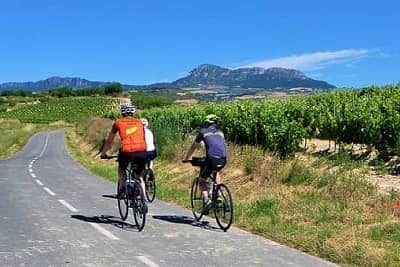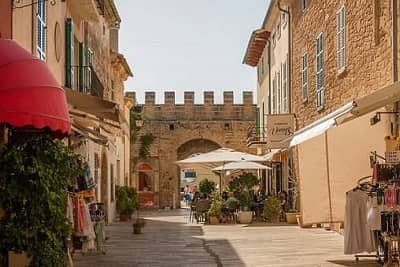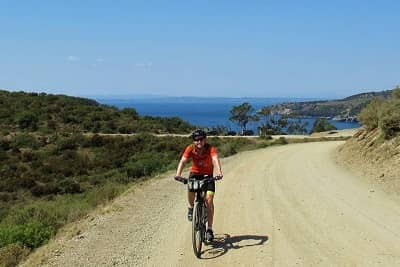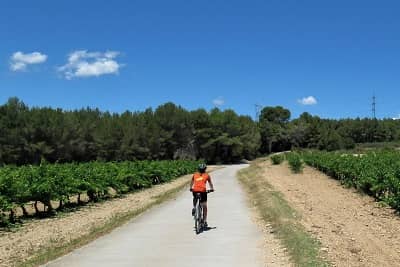The Best Handlebars for Cycle Touring
When you are cycling long distances every day for several weeks, the handlebar becomes one of the most important parts of the bike. Some people see hand pain as an inevitable consquence of undertaking such a tour; however, it does not need to be.
By choosing the correct handlebar appropriately wrapped, it is possible to eliminate hand pain, allowing you to focus more on the scenery and the cycling. Although there are many different types of handlebars used in cycling, including various aero bars for time-trialling, for touring there are basically four options - each of which has some advantages and disadvantages.
If you can ride with your hands in the same position for several hours with no discomfort, then this bar is absolutely fine for you. The reason why it is so popular on so many bikes, is because it is simple and effective.
You can choose different grips (often made of foam or rubber) to increase comfort levels, and can often adjust the stem and saddle position to take the weight more off the hands if you continue to have discomfort.
You may start to experience problems with flat bars though on longer tours, or when going over rough terrain. The reason is simply that you can only change your hand position to a limited extent, and this is where the alternative options come into play.
Bar ends can make a substantial difference to riding comfort, with just that one extra position helping to eliminate hand pain and pressure points in many cases. You can play with the angle of the ends until you find one that is comfortable for you - some people prefer the ends to be at nearly ninety degrees from the bar, while others prefer a much wider angle.
They used to be very popular on mountain bikes in the rides on a touring bike which involve long climbs.
They also offers riding positions on the side of the bar and on the top. The bar can be placed at different angles depending on which hand positions are the most comfortable for you. The top of the bar also has a lot of space for any computers, lights, bells and bags that you wish to attach to it.
As well as offering up to four hand positions and lots of space on the bar, butterfly bars are also popular because they offer an upright riding position. While this is nor desirable for racing, we believe it is much better when touring to be able to see and admire all the scenery.
Because they are not aimed at the racing market, butterfly bars tend to be quite cheap, and are a decent upgrade to consider if you do relatively short tours. The very upright position they offer is almost similar to a city bike, and can also be useful for riders with certain back problems.
The downside to them is that they lack a bit of stability compared with some of the other options. If you ride techinical terrain, or fast descents then butterfly bars are probably not the best option.
Drop handlebars on touring bikes are often different to those on road bikes, as they tend to be wider and more flared to offer greater comfort (at the expense of speed).
Until recently a major disadvantage was that there was no possibility of installing hydraulic disc brakes on to the drop bars. But as disc brakes become more adopted on road bikes, this is no longer a problem. And the company TRP even offers a brake only option - if you want to use bar end shifters and keep the brake separate.
With this issue solved, drop bars are a great option in most circumstances. Even if you don't use the drop bars themselves, they offer alternative positions on the hoods, which still afford great control of the bike on tricky terrain.
The main reason to avoid them would be if you need a more upright position, and also the cost. The drop bars themselves are not particularly expensive, but the hydraulic levers and gear shifters that they require are considerably more pricey than their straight bar equivalents.
It is worth remembering, as with saddles, that softer is not necessarily more comfortable for long distances. Soft wraps can compress under the hands and can put pressure on the ulnar nerve, causing some numbness in the fingers. A reasonably thick, but hard wrapping, can be one of the best ways to solve hand pain. But you may have to play around, because it tends to vary from person to person.
On our touring bikes, we tend to double wrap the bars with one cheap cork tape underneath and, then put an extra layer of an expensive one on top which has a nice grip and hand feel (we use Lizard Skins). But this is very much down to personal preference.
Overall, as you can see, there is no right or wrong answer, it really depends on both your comfort level with your current set up, and also your budget. If you feel great on straight bars then there is absolutely no reason to change.
It makes shifting and braking less complicated and you can have great control over your bike, particularly if you adjust the width of the handlebar to suit the terrain you ride (wider bars for more techincal stuff).
To check out similar articles, go to our cycle touring section, or check out the links below if you are interested in some of our cycling holidays that are designed for trekking or hybrid bikes.
By choosing the correct handlebar appropriately wrapped, it is possible to eliminate hand pain, allowing you to focus more on the scenery and the cycling. Although there are many different types of handlebars used in cycling, including various aero bars for time-trialling, for touring there are basically four options - each of which has some advantages and disadvantages.
Flat Bars
Nearly all mountain bikes, as well as many hybirds, come fitted with a simple flat bar. This allows easy access to the brakes and gears, and is also the most secure position for steering the bike. It is also the cheapest option for many as there is no need to buy any extra parts for it.If you can ride with your hands in the same position for several hours with no discomfort, then this bar is absolutely fine for you. The reason why it is so popular on so many bikes, is because it is simple and effective.
You can choose different grips (often made of foam or rubber) to increase comfort levels, and can often adjust the stem and saddle position to take the weight more off the hands if you continue to have discomfort.
You may start to experience problems with flat bars though on longer tours, or when going over rough terrain. The reason is simply that you can only change your hand position to a limited extent, and this is where the alternative options come into play.
Bar Ends
The cheapest and easiest way to add an extra hand position to a flat bar is to add bar ends. These are simply small extensions that clamp on to the end of the bar, and their purpose is simply to offer a different hand position.Bar ends can make a substantial difference to riding comfort, with just that one extra position helping to eliminate hand pain and pressure points in many cases. You can play with the angle of the ends until you find one that is comfortable for you - some people prefer the ends to be at nearly ninety degrees from the bar, while others prefer a much wider angle.
They used to be very popular on mountain bikes in the rides on a touring bike which involve long climbs.
Butterfly Handlebars
One of the most popular type of handlebar for cycle tourers in years gone by is the butterfly style. Butterfly bars have a straight bar on the bottom saddle, which holds the brakes and gear levels as well as offering one riding position.They also offers riding positions on the side of the bar and on the top. The bar can be placed at different angles depending on which hand positions are the most comfortable for you. The top of the bar also has a lot of space for any computers, lights, bells and bags that you wish to attach to it.
As well as offering up to four hand positions and lots of space on the bar, butterfly bars are also popular because they offer an upright riding position. While this is nor desirable for racing, we believe it is much better when touring to be able to see and admire all the scenery.
Because they are not aimed at the racing market, butterfly bars tend to be quite cheap, and are a decent upgrade to consider if you do relatively short tours. The very upright position they offer is almost similar to a city bike, and can also be useful for riders with certain back problems.
The downside to them is that they lack a bit of stability compared with some of the other options. If you ride techinical terrain, or fast descents then butterfly bars are probably not the best option.
Drop Handlebars
Drops are fitted as standard on most new touring bikes, as they offer good contorl and several different hand positions. They the best option for cycle tourists who are ride long distances and need both hand comfort and to be somewhat aerodynamic.Drop handlebars on touring bikes are often different to those on road bikes, as they tend to be wider and more flared to offer greater comfort (at the expense of speed).
Until recently a major disadvantage was that there was no possibility of installing hydraulic disc brakes on to the drop bars. But as disc brakes become more adopted on road bikes, this is no longer a problem. And the company TRP even offers a brake only option - if you want to use bar end shifters and keep the brake separate.
With this issue solved, drop bars are a great option in most circumstances. Even if you don't use the drop bars themselves, they offer alternative positions on the hoods, which still afford great control of the bike on tricky terrain.
The main reason to avoid them would be if you need a more upright position, and also the cost. The drop bars themselves are not particularly expensive, but the hydraulic levers and gear shifters that they require are considerably more pricey than their straight bar equivalents.
Wrapping
All handlebars require some kind of wrapping or grip to make them comfortable for riding long distances. Cork tape is a good option for drops and butterfly bars, while there are many specific grips available for bar ends and flat bars.It is worth remembering, as with saddles, that softer is not necessarily more comfortable for long distances. Soft wraps can compress under the hands and can put pressure on the ulnar nerve, causing some numbness in the fingers. A reasonably thick, but hard wrapping, can be one of the best ways to solve hand pain. But you may have to play around, because it tends to vary from person to person.
On our touring bikes, we tend to double wrap the bars with one cheap cork tape underneath and, then put an extra layer of an expensive one on top which has a nice grip and hand feel (we use Lizard Skins). But this is very much down to personal preference.
Overall, as you can see, there is no right or wrong answer, it really depends on both your comfort level with your current set up, and also your budget. If you feel great on straight bars then there is absolutely no reason to change.
It makes shifting and braking less complicated and you can have great control over your bike, particularly if you adjust the width of the handlebar to suit the terrain you ride (wider bars for more techincal stuff).
To check out similar articles, go to our cycle touring section, or check out the links below if you are interested in some of our cycling holidays that are designed for trekking or hybrid bikes.
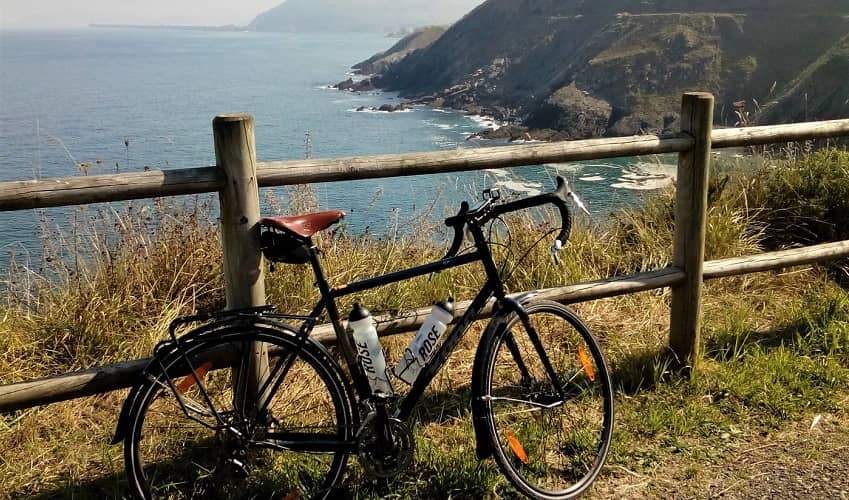
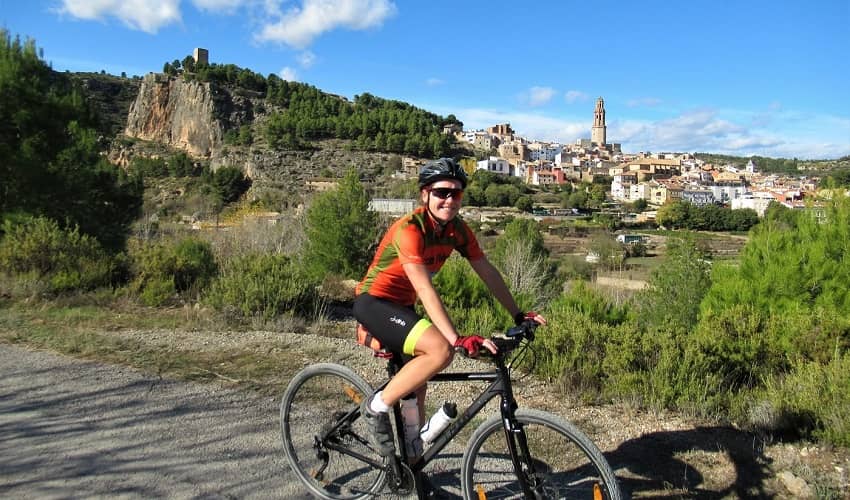
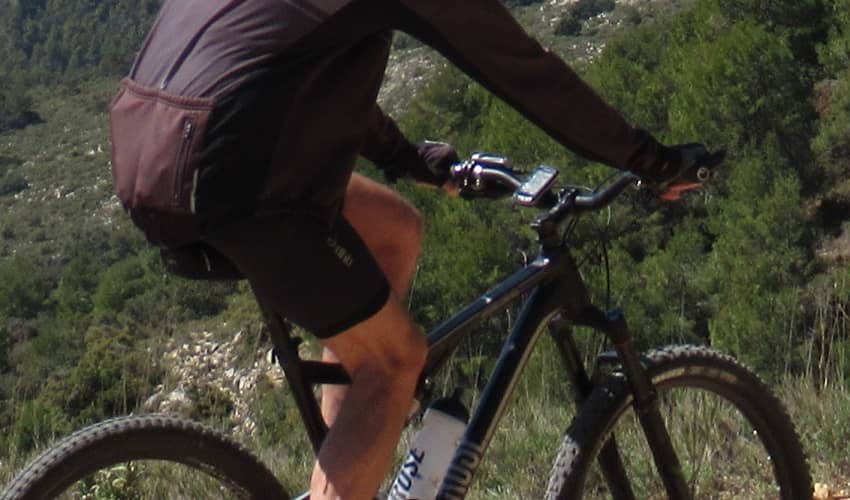
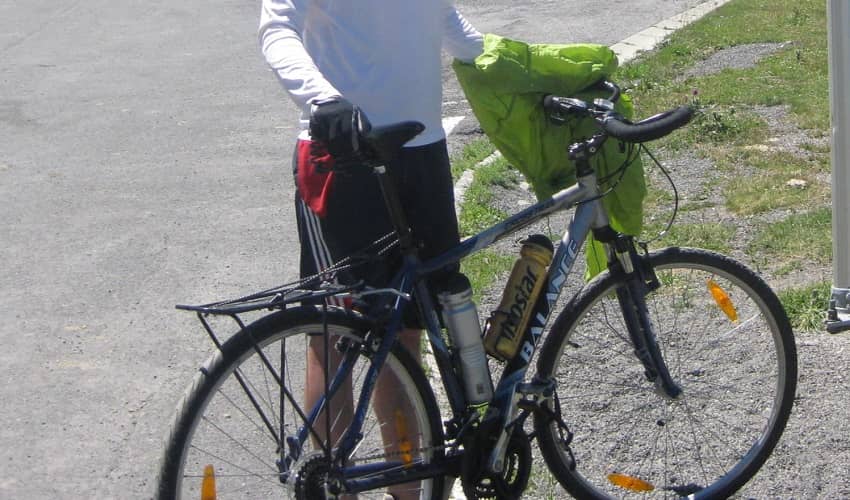
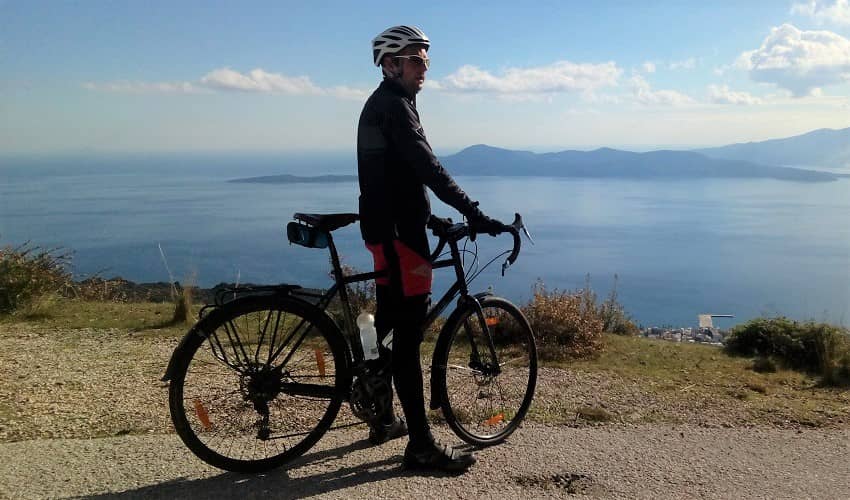
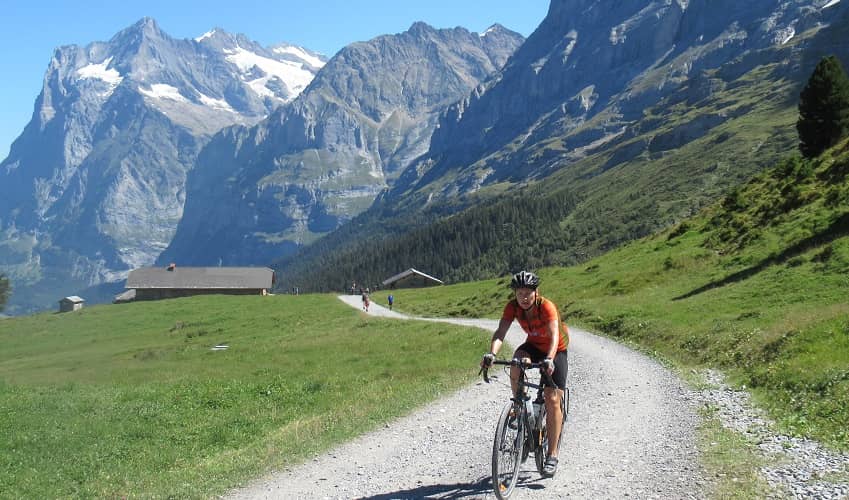
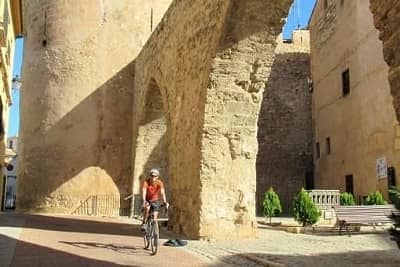
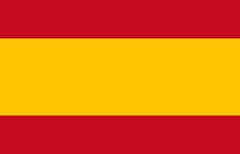 Spain
Spain
